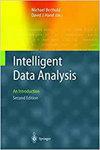TSAGNN: Temporal link predict method based on two stream adaptive graph neural network
IF 0.8
4区 计算机科学
Q4 COMPUTER SCIENCE, ARTIFICIAL INTELLIGENCE
引用次数: 0
Abstract
Temporal link prediction based on graph neural networks has become a hot spot in the field of complex networks. To solve the problems of the existing temporal link prediction methods based on graph neural networks do not consider the future time-domain features and spatial-domain features are limited used, this paper proposes a novel temporal link prediction method based on two streams adaptive graph neural networks. Firstly, the network topology features are extracted from the micro, meso, and middle perspectives. Combined with the adaptive mechanism of convolution and self-attention, the preprocessing of the feature extraction is more effective; Secondly, an extended bi-directional long short-term memory network is proposed, which uses graph convolution to process topological features, and recursively learns the state vectors of the target snapshot by using the future time-domain information and the past historical information; Thirdly, the location coding is replaced by the time-coding for the transformer mechanism, so that past information and future information can be learned from each other, and the time-domain information of the network can be further mined; Finally, a novel two-stream network framework is proposed, which combines the processing results of point features and edge features. The experimental results on 9 data sets show that the proposed method has a better prediction effect and better robustness than the classical graph neural network methods.TSAGNN:基于双流自适应图神经网络的时态链接预测方法
基于图神经网络的时态链接预测已成为复杂网络领域的热点。为解决现有基于图神经网络的时空链接预测方法未考虑未来时域特征、空间域特征使用有限等问题,本文提出了一种基于双流自适应图神经网络的新型时空链接预测方法。首先,从微观、中观和中观角度提取网络拓扑特征。结合卷积和自注意的自适应机制,特征提取的预处理更加有效;其次,提出了一种扩展的双向长短期记忆网络,利用图卷积处理拓扑特征,通过未来时域信息和过去历史信息递归学习目标快照的状态向量;最后,提出了一种新颖的双流网络框架,它结合了点特征和边特征的处理结果。在 9 组数据上的实验结果表明,与经典的图神经网络方法相比,所提出的方法具有更好的预测效果和鲁棒性。
本文章由计算机程序翻译,如有差异,请以英文原文为准。
求助全文
约1分钟内获得全文
求助全文
来源期刊

Intelligent Data Analysis
工程技术-计算机:人工智能
CiteScore
2.20
自引率
5.90%
发文量
85
审稿时长
3.3 months
期刊介绍:
Intelligent Data Analysis provides a forum for the examination of issues related to the research and applications of Artificial Intelligence techniques in data analysis across a variety of disciplines. These techniques include (but are not limited to): all areas of data visualization, data pre-processing (fusion, editing, transformation, filtering, sampling), data engineering, database mining techniques, tools and applications, use of domain knowledge in data analysis, big data applications, evolutionary algorithms, machine learning, neural nets, fuzzy logic, statistical pattern recognition, knowledge filtering, and post-processing. In particular, papers are preferred that discuss development of new AI related data analysis architectures, methodologies, and techniques and their applications to various domains.
 求助内容:
求助内容: 应助结果提醒方式:
应助结果提醒方式:


